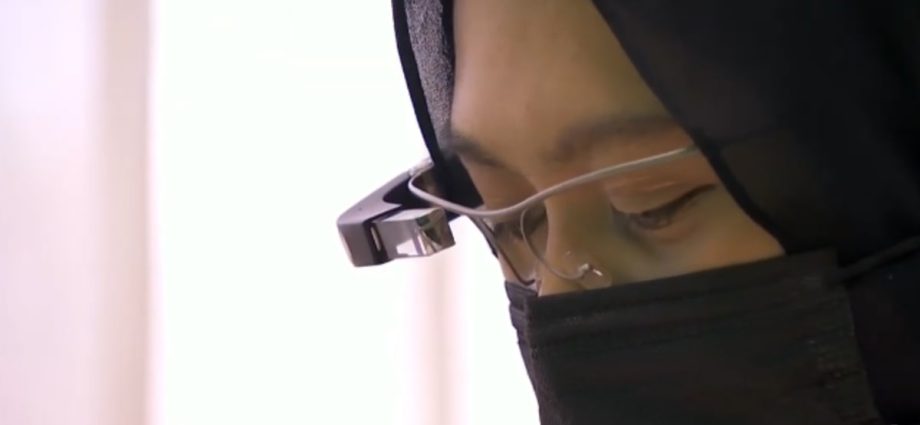
SMART GLASSES FOR REAL-TIME TRANSMISSION
Ren Ci is also piloting the use of smart glasses for nurses, which can capture and transmit what they see in real time – essentially a video call, but hands-free.
When nurses visit the elderly at home, they sometimes have to provide medical services such as cleaning wounds.
At times, they need to consult more senior nurses for help by sending photos via messaging applications.
With the hands-free smart glasses, nurses are able to easily and immediately transmit what they see to a more experienced medical professional.
Nurses can then receive real-time advice on what to do.
INCREASING MARKET FOR HEALTH TECH
There are three key drivers fueling the deployment of technology for seniors, said Dr James Kah from the National University of Singapore’s (NUS) College of Design and Engineering.
They are: an ageing population, the increasing financial power of seniors and the rapid rise of new technology in the sector.
“We can expect to see newer technology emerge in the area of health monitoring, such as wearables,” he said. “Often, this goes hand-in-hand with digital health services like apps that seniors can use to look at their health status or for telemedicine consultation.”
Although most technologies made for seniors have to be imported from overseas, which can be expensive, industry observers said these innovations are saving caregivers’ time and enabling nurses to provide better medical services.
Dr Kah added that the number of local businesses that develop tech for the elderly is set to grow in this emerging silver economy.
“As people get trained and they get more aware of the challenges, and as the market size grows, we will definitely expect more companies to come in, look into all these areas of tech development, and to address the gaps in this silver economy,” he said.
He believes that gaps are already being bridged between seniors and technology, and implementation and usage will become increasingly seamless for both caregivers and their charges.
“Our next generation of seniors are more literate and have greater exposure to digitalisation. So, the barrier is reducing,” he said.
“Secondly, as we move into industry 5.0, there is also a greater emphasis in looking at the UI UX (user experience and user interface design) aspect of digital development, which will make the technology experience for seniors more comfortable.”
Some upcoming trends in elder-care technology include applications to address social isolation and depression, as well as tech that enables exercise, Dr Kah said.

